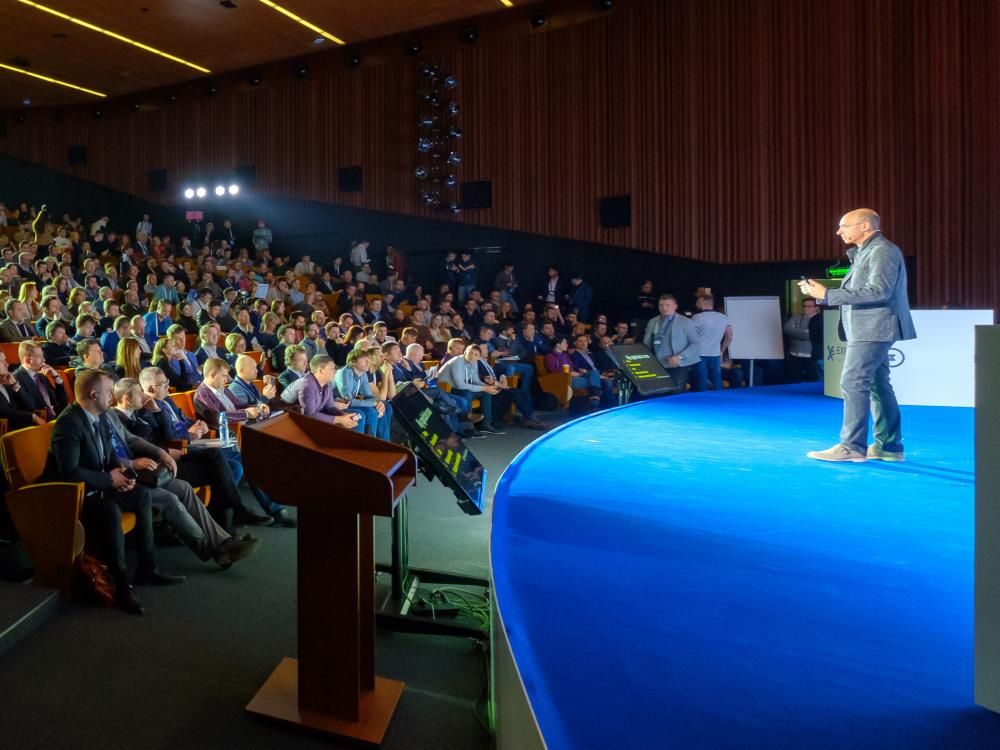
Mobile learning applications: types, features & our expertise
mLearning apps incorporate teaching approaches and training content optimized for Android and iOS to deliver an engaging and personalized student experience on the go.
Explore common types of mLearning solutions, their key features, and the advanced technologies powering them. Also learn about the costs, benefits, and challenges of implementing eLearning software designed for mobile devices.
Table of contents
Mobile learning stats
the global mobile learning market value in 2022
Global Market Insights
of all iOS apps in the App Store in 2022 were educational (third most popular category)
Statista
Types of mobile learning apps
The mobile learning market currently includes EdTech solutions designed for a variety of educational scenarios. Here are some popular examples:
Language learning apps
This group includes foreign language learning apps offering online lessons and hands-on training through exercises and tests, along with support tools like online dictionaries.
Example
Apps for educators
Often integrated with learning management systems (LMS), these applications help streamline tutoring workflows and include features for content authoring, task assignment, and learning progress tracking.
Example
Corporate training apps
These are easily scalable EdTech solutions deployed to speed up employee onboarding and foster corporate training while improving staff retention and performance.
Example
Course delivery apps
These apps act as mobile gateways for online course delivery platforms, enabling students to purchase and access eLearning content directly from their smartphones and tablets.
Example
Tutoring marketplace apps
Most tutoring marketplaces integrate their web portals with mobile apps, offering an additional touchpoint between tutors listed on the platform and users interested in one-on-one learning.
Example
Campus apps
These provide didactic and administrative tools, including content sharing, online classes, and lesson scheduling, to complement the learning experience at schools and colleges.
Example
Educational apps for kids
Kids-oriented applications engage young learners with adapted user interfaces and gamified activities specifically designed to improve spelling, math, problem-solving and other skills.
Example
Trivia apps
These applications enable learners to test and expand their knowledge on a topic of their choice through individual quizzes or by competing against other users in multiplayer challenges.
Example
Embrace new ways of learning with Itransition's mobile solutions
Features of mLearning apps
mLearning apps can be customized with a set of functionalities selected according to the educational area and end-users your organization intends to target.
For teachers
Content authoring
to assemble learning materials optimized for mobile interfaces via built-in templates and drag-and-drop features
Learning content management
to store, edit, catalog, and search for educational resources in a unified repository
Multi-format content support
to use learning materials in different formats, such as videos, slideshows, and PDFs
Event calendar
to schedule lessons, workshops, and exams depending on learners’ and trainers’ availability
Teacher profiles
enabling educators to offer their services and share personal information like courses offered and certificates
Student management
via intuitive dashboards to gather learners’ data, monitor their progress, and provide feedback
Automated task & course assignment
based on students’ didactic curriculum or trainees’ roles and department
Video conferencing system
to conduct online lessons, record them for future access, and simulate in-class tasks
For learners
Signup/login system
to create and access a user account, including password setting and registration via Google
Course catalog
providing descriptions, reviews, and a search engine with filters to find relevant content
Content access features
to improve accessibility via offline access, mobile/desktop syncing, and multi-device login
Voice commands & chatbots
enabling interactive tasks, guided activities, and 24/7 technical support
Learning content localization
and real-time translation and transcription to provide educational services in multiple languages
of eLearning activities with challenges, team play, leaderboards, badges, and other game-inspired mechanics
Adaptive learning
based on the analysis of student performance and interests to personalize training content or tasks
Social learning
to foster knowledge sharing and collaboration via forums, chats, wikis, and social features (likes, shares, etc.)
Microlearning
involving bite-sized educational content and quick tasks completed within a short span of time
For administrators
Admin panel
with customizable dashboards to monitor eLearning service delivery and generate reports
Role-based access & multitenancy
to set up different user roles with access to distinct interfaces and functionality
Account management
to streamline and automate user registration, account data entry, and course enrollment
Ticketing system
to process user queries and provide technical support in case of service outages
Push notifications & alerts
to remind users of upcoming events, course updates, and newly uploaded learning content
Monetization options
to ensure eLearning service profitability via premium subscriptions, in-app purchases, or ads
Payment system
with features like shopping cart, checkout, credit card verification, payment processing, and invoicing
Cyber security capabilities
to safeguard the mobile learning app and users’ personal information from hacking and data loss
Data analytics features
to monitor learner performance, content usage, user subscriptions, and course sales
Advanced technologies for learner engagement
Mobile solutions can be equipped with emerging technologies to unlock new learning approaches that wouldn’t be possible with traditional face-to-face interaction.
Artificial intelligence
Many mobile applications use one or more branches of AI, such as machine learning, to probe students’ behavioral patterns, NLP to power virtual tutors or generate training content, and computer vision to facilitate gamified tasks requiring interactions with objects.

Image title: DuoLearn’s AI-powered virtual tutors
Image source: youtube.com
AR & VR
Equipped with AR or VR features, mLearning apps can generate immersive 3D simulations, enabling your students to interact in virtual scenarios or augment the surrounding environment with information overlays.

Image title: SkyView’s AR-based stargazing feature
Image source: space.com — SkyView stargazing app review: locate stars and planets with your smartphone
Education analytics
You can enhance your mobile app with analytical functionalities or integrate it with external data analytics software to monitor student performance and tailor learning paths and educational content to their current skills and desired outcomes.

Image title: Moodle’s learning analytics dashboard
Image source: docs.moodle.org — Analytics
Our mLearning services
At Itransition, you will find the tech stack and holistic expertise to shape a ready-to-go mLearning app from the ground up according to your requirements.

Consulting
- Market research and competitor analysis
- Budgeting and feasibility assessment
- Selection of an optimal tech stack
- Software architecture design
- Post-release user training and support
- App Store and Google Play launch roadmap
Development
- UI/UX design and prototyping
- Front-end and back-end mobile development
- Software integrations with LMS, CRM, and other software
- End-to-end application testing
Maintenance
- Software monitoring and troubleshooting
- Functional and performance enhancements
- Code refactoring to improve maintainability
- Adjustments to changing tech environments
Create your mLearning app with Itransition's guidance
mLearning app cost factors
The investment to build an mLearning app from scratch can range widely based on multiple factors. For a more detailed budget estimate, you can consult a team of EdTech experts early in your development journey.
App design & functionality
including software architecture, modules and features, user interface, and software integrations
User base
referring to both the number of users who will access the app and potential UX/UI customizations for distinct user roles
Hosting environment
where the mLearning app will be deployed (shared hosting, dedicated server, VPS, or cloud)
Mobile operating system
namely Android and iOS, and respective app marketplace, along with the native, hybrid, or cross-platform nature of the app
Tech stack
to build the app, such as development frameworks and programming languages, cloud-based services, hardware, and third-party tools
Data management
covering data cleansing, annotation, transformation, storage, and migration, and modeling, particularly important for AI-powered apps
Development team composition
(project manager, business analyst, designers, developers, QA engineers, etc.) in line with the project’s complexity
Post-release expenses
for user training and support, ongoing app maintenance, regular updates, and modernization efforts
The benefits of mLearning applications
For organizations
- Expanded customer and potential audience reach
- Ongoing learner performance tracking
- Easier communication between learners and educators
- Training cost-efficiency compared to in-person sessions
- Higher completion rates via microlearning
For students
- Personalized user experience
- Anytime, anywhere access to learning resources
- Superior student engagement via gamification
- Self-paced learning progress
- Synergy with device features like touchscreen or cameras
mLearning considerations
Concerns
Recommendations
Content & UX/UI design
mLearning content and UX/UI design choices should take into account the peculiarities of mobile devices and their operating systems, along with the needs of your target users. Simply repurposing desktop- and web-oriented content without properly adapting it will lead to inconsistencies and poor mobile learning experience.
mLearning content and UX/UI design choices should take into account the peculiarities of mobile devices and their operating systems, along with the needs of your target users. Simply repurposing desktop- and web-oriented content without properly adapting it will lead to inconsistencies and poor mobile learning experience.
mLearning app design should enable faster interactions and entice users who access educational services on the go and may have a limited attention span. This includes drawing on gamification to foster engagement, along with microlearning to split learning paths into "digestible" units.
To address the limited screen size of portable devices, maximize readability by prioritizing essential information while reducing redundant visual elements.
Perform usability and compatibility tests to detect UI/UX design mistakes and ensure the app’s interface is intuitive and responsive across various platforms and devices.
Design applications in adherence to the SCORM specification, enabling them to synchronize with other compliant solutions, such as an LMS, and helping instructors track learners’ progress and interactions from different systems.
Native vs hybrid or cross-platform
While native mLearning apps are built to run on specific operating systems like Android and iOS, hybrid apps and cross-platform apps can be developed with a common codebase for different mobile platforms and deployed through various stores. Selecting one of these models should be approached with due caution as it will define both the tech stack to be used and the app’s functionality.
While native mLearning apps are built to run on specific operating systems like Android and iOS, hybrid apps and cross-platform apps can be developed with a common codebase for different mobile platforms and deployed through various stores. Selecting one of these models should be approached with due caution as it will define both the tech stack to be used and the app’s functionality.
Since native apps are designed with mobile platforms’ requirements in mind, they typically ensure a smoother and more aesthetically pleasing UI/UX, along with superior performance and responsiveness. This will be an advantage if you plan to include advanced and interactive features like gamification and VR. Also, native apps can work in offline mode once installed, fostering eLearning service accessibility.
If your company prioritizes easier development and maintenance, you may find hybrid and cross-platform solutions more appealing since they use a single codebase, unlike language-specific native apps. Furthermore, distribution via multiple app stores can improve customer reach.
Security & compliance
mLearning apps typically collect and process users’ personal information. This data should be managed according to relevant legislation and protected from hacking and leaks to avoid losing credibility and incurring fines.
mLearning apps typically collect and process users’ personal information. This data should be managed according to relevant legislation and protected from hacking and leaks to avoid losing credibility and incurring fines.
Make sure your mobile learning solution is designed in strict compliance with major data management standards and regulations, including GDPR and PCI DSS.
Equip the mLearning app with cybersecurity features like identity and access management, multi-factor authentication, user activity monitoring, encrypted data exchange, and dynamic data masking.
Perform penetration tests and security code reviews to identify flaws or vulnerabilities that could compromise the safety of your app and user data.
Keep in mind that native apps are generally considered the safest option. In fact, they have access to platform-specific, built-in security features and don’t suffer from web-related vulnerabilities affecting cross-platform and hybrid apps, such as JavaScript injection.
A growing eLearning trend deserving its own place
Embracing users’ evolving habits and emerging mobile tech trends, mLearning apps empower students with highly adaptive, “anytime, anywhere” training experiences while representing a valuable business opportunity for EdTech companies and educational organizations.

Service
eLearning portals
Here is your guide to eLearning portals' features, potential returns, and development by Itransition. Book a consultation to discuss your project.

Case study
LMS for the casino industry
Read how Itransition developed a SCORM-compliant multi-tenant LMS system, equipped with process automation and customization options.

Case study
Corporate learning portal for PayPal
This is how Itransition delivered a platform-based new hire training portal for PayPal, helping to reduce the learning curve for newcomers.

Case study
Custom conference management software for an educational society
Learn how Itransition delivered a suite of custom conference management software and enriched it with bespoke modules automating event organization.

News
Itransition recognized in Forrester’s Modern Application Development Services report
Itransition is featured in MAD consulting boutiques and Modern product development service providers categories by Forrester.